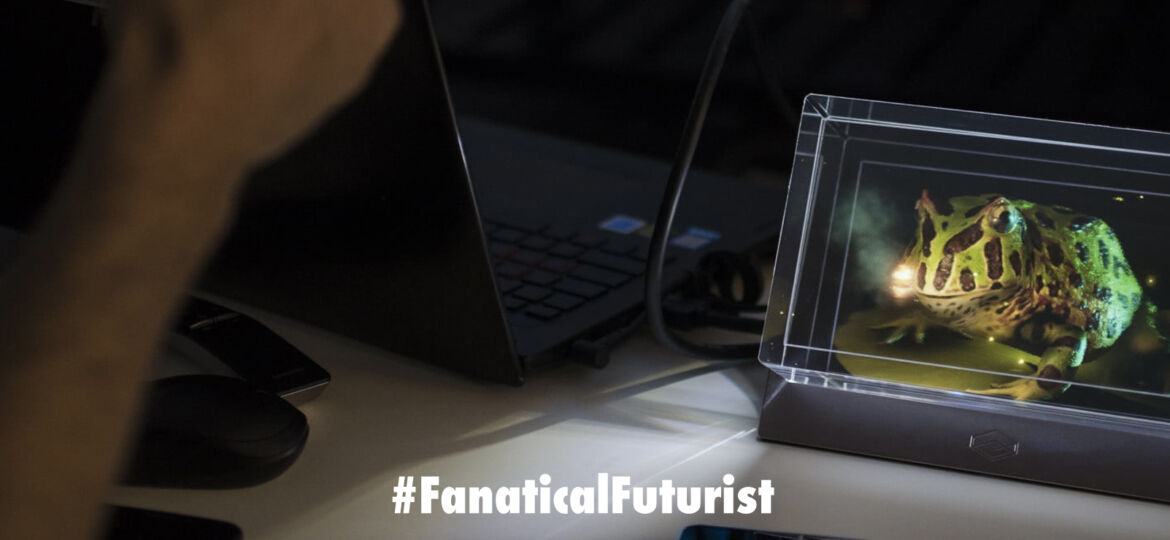
WHY THIS MATTERS IN BRIEF
VR headsets create an isolating experience, so a US startup has found a way to create VR worlds without them.
Many people have dreamt about being able to use free form holograms, like the ones in Star Wars, to communicate with their friends and other sci-fi brethren across the distant reaches of the universe, and while Virtual Reality (VR) headsets have tried to fulfil that promise, let’s face it, strapping a black box onto your face and entering a VR world just isn’t the same. But what if you could experience all the benefits of VR without having to use the headset, even a brain controlled VR headset, and what if instead of an isolating experience VR was a social one?
That’s the vision of Shawn Frayne, the CEO of the startup Looking Glass Factory, who says he believes that the solo experience of current VR tech can be a lonely one and that for true collaborative experiences and interaction 3D creators and consumers alike will want use something like his new device, dubbed simply “the Looking Glass.” And he’s not alone, even Google who recently tried to create “transparent” VR headsets, agree with him, at least in principle. However, until real holographic technologies, like this one, which is the world’s first real free form hologram, become commercially available Frayne’s Looking Glass could be a great alternative.
Tested checks it out
Unlike the Oculus Go and HTC Vive headsets, Frayne’s team brings 3D creations to life using a book sized, glass box which will begin shipping this September. The clear, crate like device serves as a lens into a “dimension of realistic holograms,” without the user having to slip on a pair of goggles or a headset.
“Headsets are isolating, and in a sense that they point to a dystopian future,” Frayne says. “We’re prioritising the real world and pulling pieces of the real world into a virtual space.”
The Looking Glass combines light field and volumetric display technologies, that I’ve talked about before and that are being used to create new types of 3D holographic displays, to create 3D holograms of everything from computer animations and designs, and even renders of peoples’ faces.
The looking glass shouldn’t be mistaken with the old victorian technique known as Pepper’s Ghost though which was famously used on a grand scale in the Haunted Mansion ride at Disney World, where an optical illusion was created by reflecting a high quality, 2D rendering onto a special type of foil known as Musion Eyeliner that makes it appear 3D.
Frayne’s creation notably brings actual 3D holograms to life, albeit for now in a smaller confined space.
Frayne sees a future where designers and animators use the Looking Glass, which will be on sale for around $600 for a 8.9 inch box and $3,000 for a 15.6 inch one, and that works with Mac’s and PC’s with HDMI and USB 3.0 ports, to examine and tweak their work on the fly, and gamers use it as an extension of their consoles or smartphones.
“Architects can use this to demonstrate designs instead of using expensive 3D prints, it can be a playpen for virtual pets like in Pokemon Go, and even as a screen for holographic Skype calls,” he says.
One day we’ll all be able to have holographic chats with our buds, but until then the looking glass could be an interesting alternative.
















